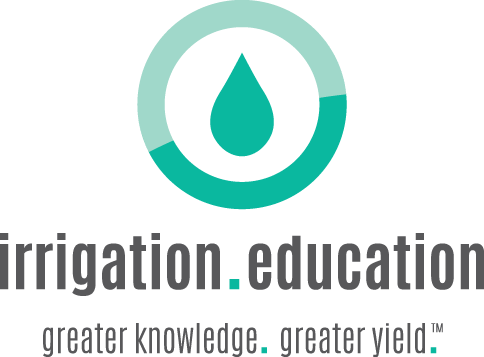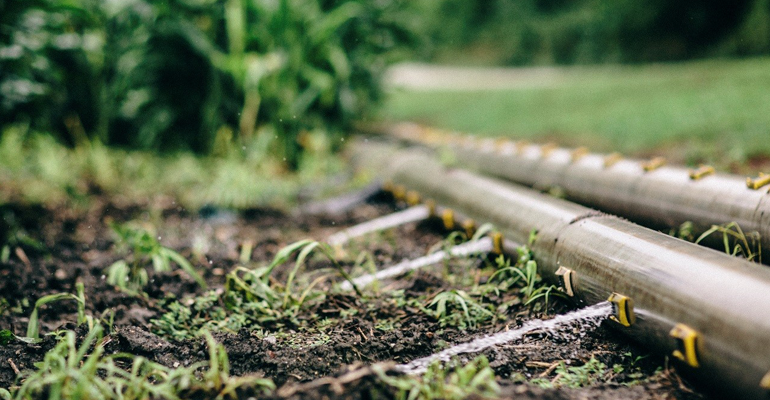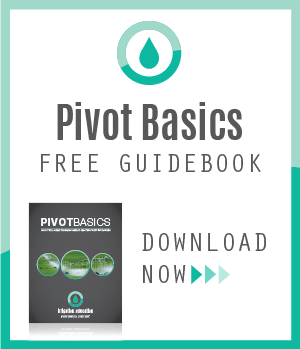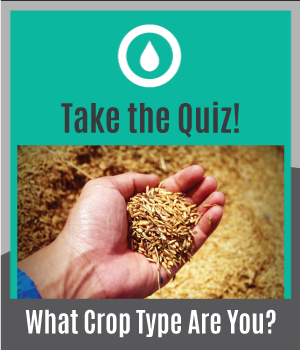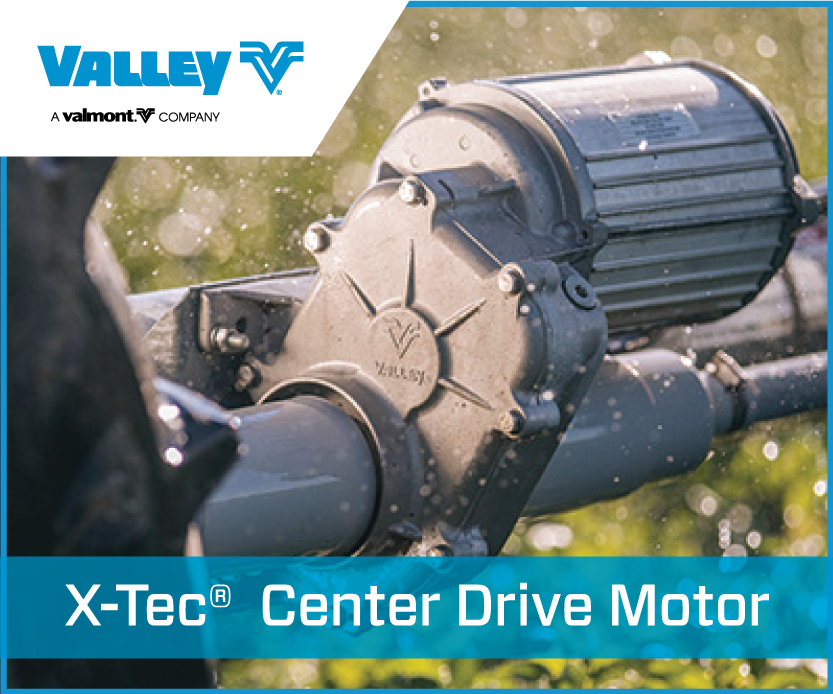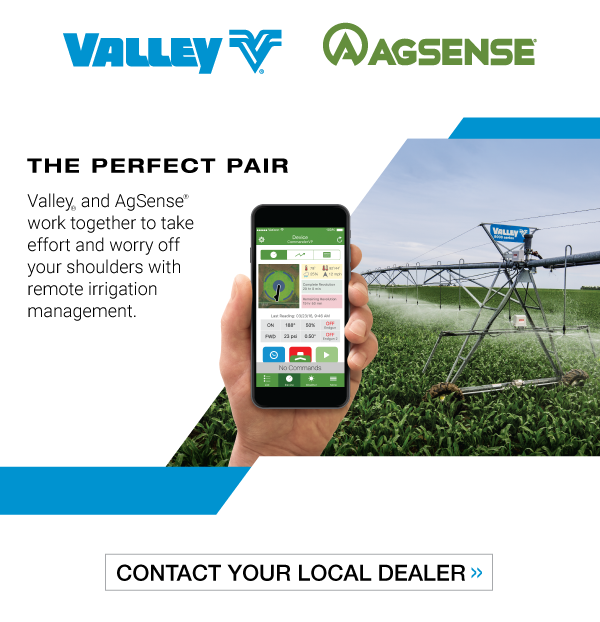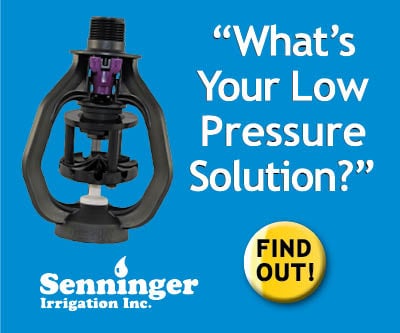Flood, drip, and mechanized are all common types of irrigation that are used in agriculture. If you’re looking to add irrigation to your dry land, it’s important to understand the benefits and drawbacks of each type in order to make the right decision for your fields. Before you decide on your method(s), you need to fully understand your field’s topography, soils, available water, and crop type(s). When you have a complete understanding of your field’s layout and composition, you’re ready to begin searching for the right method of irrigation.
1. Flood Irrigation
Flood irrigation is one of the oldest methods of irrigation. This type is also referred to as surface or furrow. Flood irrigation is pretty self-explanatory. In this irrigation type, you literally flood the field with water and wait for it to absorb. This is a very commonly used type of irrigation, however it does have severe downsides. The biggest downside is the sheer amount of water used. As the name suggests, water used in flood irrigation is more or less “uncontrolled” and is applied in large amounts to massive areas. Because of how the water is applied to the field, the efficiency of this irrigation type is a meager 40-50%.
Soils and plants can only absorb water so quickly, and that’s why it’s important to know how your field will respond to different water applications. Because flood irrigation saturates the soil so quickly, the plant roots cannot take advantage of all of the available water. As a result, large amounts of water can trickle down past the roots, also known as leeching, and waste resources. Other water loss can be associated with runoff and evaporation.
Another risk associated with flood irrigation is waterlogging. Waterlogging occurs when a plant’s roots have too much water, and the plant’s growth is stunted until enough water has drained from the root zone. Situations like this also run the risk of plants becoming more susceptible to disease. The over-abundance of water can negatively impact crop yields.
Flood or furrow irrigation has been practiced for thousands of years and has been modified with new practices and technology along the way. Among the cheapest forms of irrigation, you can find flood irrigated fields around the globe. In areas abundant with freshwater, growers can turn on the pumps and let the flood waters carry silt and nutrients across the field.
There have been many successful flood irrigation operations in the past and there will be many more. Unfortunately, the need to conserve resources is growing and most producers will not be able to support the amount of water needed for high yields. Flood irrigation may produce strong yields, but beware, your inputs may also put your crops in danger. Before deciding on flood, make sure to learn about additional methods like drip or mechanized. These are typically much more efficient in terms of water, nutrients, and chemical application.
-
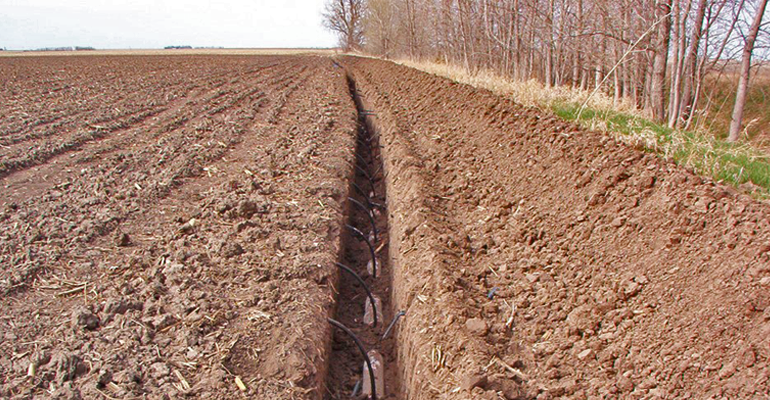
-
2. Drip Irrigation
Drip irrigation is a network of perforated tubes that line row crops. Water is pushed through the tubes using a low pressure pump, and the tubes empty when the pump is off. Another common irrigation type, sub-surface drip irrigation in particular, can be a good fit for small or irregularly shaped fields. Drip systems are popular because they place water directly on the soil (or near the root zone with sub-surface drip systems). This reduces the amount of water lost to evaporation and run-off.
While the operating costs for a sub-surface drip system is average compared to other irrigation solutions, the labor and maintenance needed to keep a drip system running smoothly can be a drawback. On-going upkeep costs on drip systems are typically 3-5 times higher than other irrigation systems. Drip systems usually last 10 to 15 years before they need to be replaced, and water uniformity can degrade during the system’s lifespan. Salinity, corrosion contaminates, and small particles may influence your water uniformity, which is vital to maintaining a functioning network of pipes and improving crop yields.
While the efficiency can often be a selling point for drip systems, it’s important to consider that they are less adaptive and less forgiving when it comes to irrigation management. Sub-surface systems are very difficult to adjust once they are trenched, and finding leaks and clogs can be cumbersome. As with flood irrigation, people have been very successful using drip systems, you just need to do your research and weigh the pros and cons for your situation.
-
-
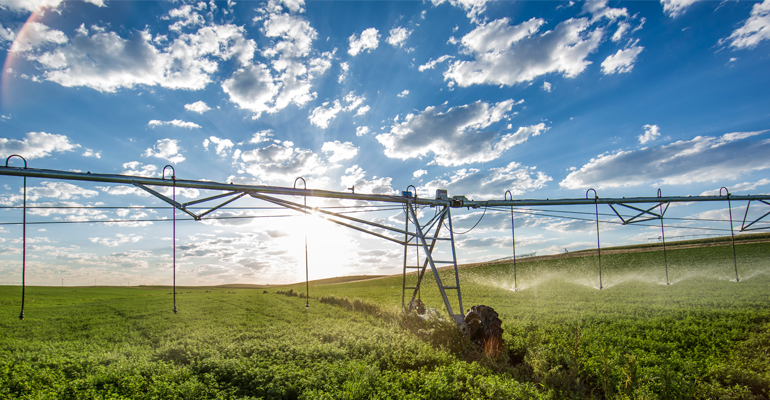
-
3. Mechanized Irrigation
Another very common type of irrigation is mechanized. This method refers to irrigation that uses center pivots or linear machines to irrigate land. In regards to efficiency, mechanized irrigation is more efficient than flood and comparable to drip irrigation. However, center pivots and linears are less expensive to install on large fields—often installed in one or two days—and have a higher resale value than drip irrigation systems.
Because the installation does not require a buried system, like sub-surface drip, center pivots and linears are often preferred for operations where frequent crop rotations are used. They’re also preferable in fields with sandy soils, but can be modified for nearly any type of soil by changing tires, application rates, and sprinkler types. One advantage that mechanized irrigation has is that it can be used on land that is hilly, unlike flood irrigation. Center pivots and linears can also be used to apply chemicals and fertilizers to your fields.
Longevity is often a concern when making the decision on what equipment to invest in. Center pivot and linear machines are known to have excellent field life, often 20 years or more. If water contamination is a consistent problem in your area, large providers offer protection ranging from contaminant tolerant paint, galvanized steel, and polyethylene interior liners.
Mechanized irrigation can have the same issues with low-quality water as drip. Unlike drip, however, you can apply a variety of filters to remove soil particles. Protective applications as mentioned above also improve longevity, and all parts are located above ground, giving service technicians easy access to troubleshoot and find solutions. Mechanized irrigation also has a larger amount of electrical and mechanical components. These components wear down and require service. Professional assistance is often highly recommended when troubleshooting or repairing mechanized irrigation systems.
For additional information on mechanized irrigation and how they work, click here: How a Center Pivot Irrigation Machine Works
-
Learn More
Modern irrigation techniques are continually evolving. Take your time, do your research, and ask irrigation professionals for help if you need it.
-
To learn more about irrigation types, check out the Irrigation Types: Benefits and Drawbacks course on irrigation.education! For more information on irrigation products, check out the product courses provided by our sponsors.
-
-
-
-
Share your thoughts, comment below!
-

